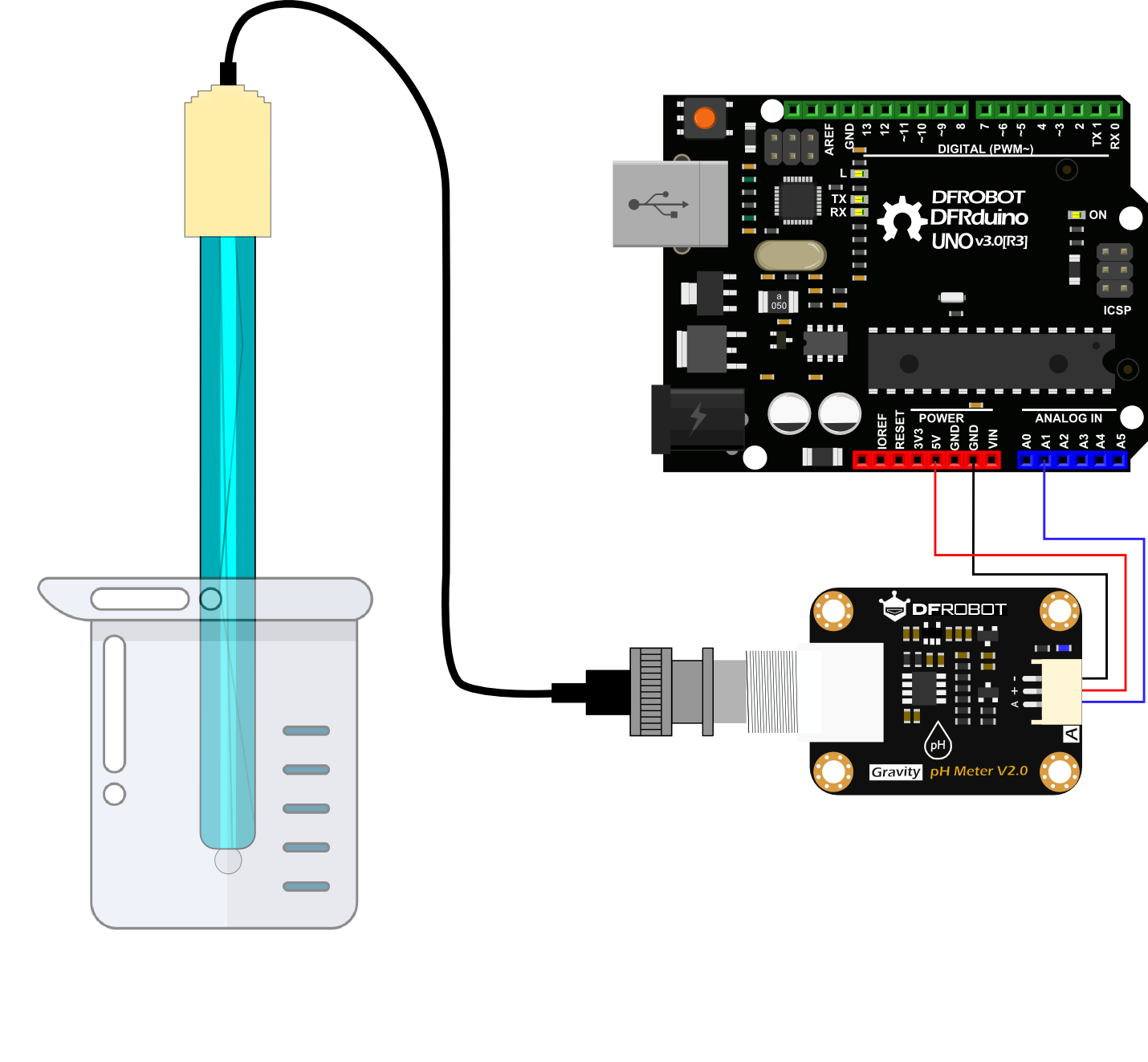
Gravity: Analog Industrial pH Sensor / Meter Pro Kit V2
Tutti i prezzi sono IVA inclusa
DFRobot Gravity: Analog pH meter pro V2 is specifically designed to measure the pH of the solution and reflect the acidity or alkalinity. It is commonly used in various applications such as aquaponics, aquaculture, and environmental water testing.
You may also check Liquid Sensor Selection Guide to get better familiar with our liquid sensor series.
As an upgraded version of pH meter pro V1, the secondary generation pH meter pro greatly improves the precision and user experience. The onboard voltage regulator chip supports the wide voltage supply of 3.3~5.5V, which is compatible with 5V and 3.3V main control boards, such as Arduino and LattePanda. The output signal filtered by hardware has low jitter. The software library adopts the two-point calibration method, and can automatically identify two standard buffer solutions (4.0 and 7.0), so simple and convenient. It uses an industry electrode and has a built-in simple, convenient, practical connection and long life, very suitable for online monitoring.
This industry pH combination electrode is made of a sensitive glass membrane with low impedance. It can be used in a variety of PH measurements with fast response, and good thermal stability. It has good reproducibility, difficult to hydrolysis, and basically eliminates the alkali error. Between 0 to 14 pH range, the output voltage of the electrode is linear. The reference system which consists of the Ag/AgCl gel electrolyte salt bridge has a stable half-cell potential and excellent anti-pollution performance. The ring PTFE membrane is not easy to be clogged, so the electrode is suitable for long-term online detection.
With this product, the main control board (such as Arduino), and the software library, you can quickly build the pH meter, plug, and play, with no welding. DFRobot provides a variety of water quality sensor products, uniform size, and interface, not only meeting the needs of various water quality testing but are also suitable for the DIY multi-parameter water quality tester. You may also check Liquid Sensor Selection Guide to get better familiar with our liquid sensor series.
The pH is a value that measures the acidity or alkalinity of the solution. It is also called the hydrogen ion concentration index. The pH is a scale of hydrogen ion activity in the solution. The pH has a wide range of uses in medicine, chemistry, and agriculture. Usually, the pH is a number between 0 to 14. Under the thermodynamic standard conditions, pH=7, which means the solution is neutral; pH<7, which means the solution is acidic; pH>7, which means the solution is alkaline.

Arduino Connection Diagram
Attention:
1. The BNC connector and the signal conversion board must be kept dry and clean, otherwise, it will affect the input impedance, resulting in an inaccurate measurement. If it is damp, it needs to be dried.
2. The signal conversion board cannot be directly placed on a wet or semiconductor surface, otherwise, it will affect the input impedance, resulting in an inaccurate measurement. It is recommended to use the nylon pillar to fix the signal conversion board, and allow a certain distance between the signal conversion board and the surface.
3. The sensitive glass bubble in the head of the pH probe should avoid touching the hard material. Any damage or scratches will cause the electrode to fail.
4. After completing the measurement, disconnect the pH probe from the signal conversion board. The pH probe should not be connected to the signal conversion board without the power supply for a long time.
5. The bottle cap of the probe contains protective liquid (3.3mol/L KCL). Even if the bottle cap is screwed tightly, some protective liquid may still leak around the bottle cap, forming white crystals. But as long as there is still protective liquid in the bottle cap, it will not affect the life and accuracy of the probe. So please use it with confidence. It is recommended that the white crystals be poured back into the protective liquid in the bottle cap.




